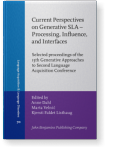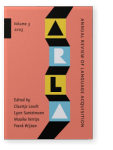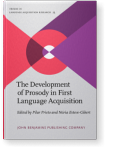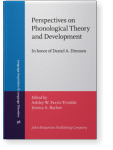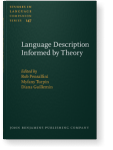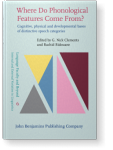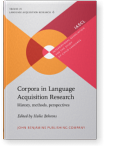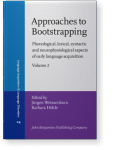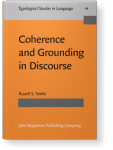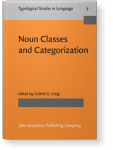Katherine Demuth
List of John Benjamins publications for which Katherine Demuth plays a role.
Book series
Yearbook
ISSN 1568-1467 | E-ISSN 1569-965X
Title
The Bantu–Romance Connection: A comparative investigation of verbal agreement, DPs, and information structure
Edited by Cécile De Cat and Katherine Demuth
[Linguistik Aktuell/Linguistics Today, 131] 2008. xix, 355 pp.
Subjects Generative linguistics | Other African languages | Romance linguistics | Syntax | Theoretical linguistics
2018 Chapter 11. Understanding the development of prosodic words: The role of the lexicon The Development of Prosody in First Language Acquisition, Prieto, Pilar and Núria Esteve-Gibert (eds.), pp. 207–224 | Chapter
Children’s early speech productions are not entirely adult-like, with syllables and morphemes often missing from early utterances. However, these patterns of development also appear to be influenced by the language being learned. This chapter explores the role of the lexicon as a driving force in… read more
2014 Prosodic Licensing and the development of phonological and morphological representations Perspectives on Phonological Theory and Development: In honor of Daniel A. Dinnsen, Farris-Trimble, Ashley W. and Jessica A. Barlow (eds.), pp. 11–24 | Article
One of the challenges for understanding the processes underlying the acquisition of phonology has been the variability found in early speech productions. Our recent research suggests that much of this is due to the phonological (or prosodic) context in which words (and their segments) appear. This… read more
2014 Phonological aspects of Arandic baby talk Language Description Informed by Theory, Pensalfini, Rob, Myfany Turpin and Diana Guillemin (eds.), pp. 49–80 | Article
Baby Talk (BT), also known as child-directed speech, is a non-standard form of speech used by adults when talking to infants. In Arandic languages BT involves the use of a small set of unique but widely known words, onomatopoeic-derived words, as well as phonological modifications to standard… read more
2011 Acoustic cues to stop-coda voicing contrasts in the speech of 2-3-year-olds learning American English Where Do Phonological Features Come From?: Cognitive, physical and developmental bases of distinctive speech categories, Clements, G. Nick and Rachid Ridouane (eds.), pp. 327–342 | Article
Stevens (2002) postulates that speakers represent words in terms of distinctive features, with different acoustic cues signaling the feature contrasts in different contexts. Imbrie (2002) suggests that children use cues differently from adults in word-onset consonants. This paper explores these… read more
2008 Exploiting corpora for language acquisition research Corpora in Language Acquisition Research: History, methods, perspectives, Behrens, Heike (ed.), pp. 199–205 | Article
2001 Prosodic Constraints on Morphological Development Approaches to Bootstrapping: Phonological, lexical, syntactic and neurophysiological aspects of early language acquisition, Weissenborn, Jürgen and Barbara Höhle (eds.), pp. 3–21 | Article
1987 Pragmatic funtions of word order in Sesotho acquisition Coherence and Grounding in Discourse: Outcome of a Symposium, Eugene, Oregon, June 1984, Tomlin, Russell S., pp. 91–108 | Article
